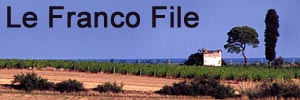Some months ago, I’d had difficulty finding ferry crossings to Spain that suited our needs. Even with my 3-month lead time, there were a distressing amount of sailings that seemed to be full. Adjusting our needs slightly, I eventually found a Portsmouth-Bilbao sailing on 26th April with capacity and a large, outside cabin.
One problem appeared to be Brittany Ferries swapping out one of their larger, more modern “cruise” ferries for an older tub-like ferry. Whereas most slow boats reputedly go to Chine, this slow boat was destined to ply its trade between Portsmouth and Bilbao. Normal crossing times on this route had been 24 hours; this trip would be 5 hours longer at 29 hours. Joy! Not only did it leave Portsmouth a couple of hours early at 08:45, it docked in Bilbao a couple of hours later at 14:15, which made a 1-shot trip to Jalón unpalatable. Francine found a hotel, in the form of a converted castle, about half way, for us to break the journey and recharge our batteries. The castillo was listed under a hamlet called Grisel, near to Tarazona.

 We’d left home at 04:15 and boarded the ferry without drama. Excellent. I was a little concerned that our older transport might be a little less stable than more modern vessels but praise be to the weather gods, the Bay of Biscay was as smooth as a proverbial mill pond. In fact, I can’t ever remember a smoother trip on any vessel. So, after an even more tedious than usual 29-hour ferry trip, we disembarked in Bilbao. How anybody puts up with staring at this interminably on a cruise is utterly beyond me. [I know, they generally cruise at night, pausing to invade the next town by day.]
We’d left home at 04:15 and boarded the ferry without drama. Excellent. I was a little concerned that our older transport might be a little less stable than more modern vessels but praise be to the weather gods, the Bay of Biscay was as smooth as a proverbial mill pond. In fact, I can’t ever remember a smoother trip on any vessel. So, after an even more tedious than usual 29-hour ferry trip, we disembarked in Bilbao. How anybody puts up with staring at this interminably on a cruise is utterly beyond me. [I know, they generally cruise at night, pausing to invade the next town by day.]
At risk of repeating myself, these Brittany Ferries jobs are not the so-called RORO [Roll On, Roll Off] ferries. Loading and unloading them is a very technical-looking game rather like one of those plastic tile puzzles with one empty space, where you must rearrange the tiles into the correct order by constantly shuffling them around. The shuffling here involves truck drivers reversing articulated lorries into spaces on board, and some car drivers having to reverse their caravans – a risky business given some car driver’s skill levels. The truck drivers are, of course, adept at this. So, after the tile-shuffling disembarkation game, we were not quite the penultimate vehicle to clear immigration, there were actually two cars left behind us. [Is there such a word as penpenultimate?]
The weather was gloomy, very grey and heavily overcast. Sally Satnav did her job and navigated us through the tangled maze of tarmac that Bilbao refers to as a road system. Soon we were on cruise control travelling a well trodden path heading for Zaragoza. Unlike previous trips, our task this time was to aim for Zaragoza but miss. We needed to miss to the right and, sure enough, after three hours, Sally instructed us to exit the autopista and head right towards Tarazona which, for the sake of discussion, we will call Beyond. Soon after exiting the autopista we past a fuel station but I decided to wait until Beyond to fill up.
Enter: technological aberration. Grisel, our target, appeared to be about 3 kms to the left of Beyond. A main road headed that way towards Zaragoza. In that general direction we could see a serious hill/mountain with its top covered by wind turbines. Grisel, we thought, was on what was, for us, the front side of this serious hill/mountain, beneath said wind turbines. Whereas we expected to hang a left, Sally insisted we continue through Beyond. sans deviation. Curious, we thought. It goes without saying that I did not see another fuel station.
Sally proceeded to have us wind our way around the far side of the serious hill/mountain to the Back of Beyond, no civilization in view, before bearing left onto a single track road with the distressing sight of grass growing down its centre where tyres fear to tread. Had the track not been signed to Grisel, I’d have panicked more than I did.
We climbed the back side of the serious hill/mountain, rounding several hairpin bends, before finishing up on the summit directly beneath the assembled rotating turbines of the wind farm. From here our track descended round more hairpin bends with little more in sight. I was on the point of considering a 15-point turn when, first of all another vehicle approached out of the mist and then something resembling civilization loomed into view. Ah, Grisel, I presume. We entered the back of it.
Now, Grisel is very small but sports a mass of very closely packed streets, all of which were curved so you had no chance of seeing where they might be heading. They were so tightly packed that Sally’s map was unclear and, by the time she’d said “in x metres turn right”, you’d passed two junctions with a third lying ahead and were left wondering precisely which “turn right” she’d actually meant. Just to improve matters, the glowering sky now began depositing very wet rain.
We found a church with some (just) off-road parking and stopped. Francine resorted to a Spanish phone call to the hotel’s number. No answer or, more accurately, a recorded message in incomprehensible Spanish. A second attempt resulted in the same recorded incomprehensible Spanish. Happiness was at a low ebb. Francine was considering punching Jalón in as a destination and forgetting our overnight stop completely.
I heard voices and a lady appeared with a small child in tow. I donned my waterproof and trotted off to try my meagre Spanish. Muttering something along the lines of “por favor, señora” followed by “castillo”, “hotel” and “coche” [car], fortunately she got the gist of my problem and pointed downhill telling me to go “izquierda” which fortunately, I understood meant left. “Baja” [low] and “parking” [guess that one] also featured somewhere in her sentence. I muttered something further that I hoped expressed my deep gratitude to her before setting off and finding the parking area, complete with a sign showing pedestrian access to the castillo.
Armed with bags and raincoats, we were now faced with a locked, metal covered, humongous double door; not quite a portcullis but just as impenetrable. A rope dangled through a hole in the door, beside which were instructions to pull to gain entrance. We pulled. No sound emanated. I pulled again, more forcefully. More silence at first but eventually I heard the reassuring sound of approaching footsteps. The door opened. Lurch would not have looked out of place. Instead, we were greeted by the smiling face of a pleasant Spanish man who mercifully spoke reasonable English. Relief began to settle.
Checking in, our host was mightily amused by our satnav’s chosen route wasting an additional 5 or so kilometres to take us round the Back of Beyond, over the backside of the serious hill/mountain, threading us between the wind turbines before descending the front side back towards Beyond. “But we are only 3kms from Tarazona the other way”, he said. “Yes, we thought that, too”, we muttered through gritted teeth.
The worst over, we were in desperate need of a drink. Our original plan had been to find somewhere to eat in Tarazona but in the dark and the rain, and not yet having travelled the correct road, we opted instead for the remains of our picnic supplies, originally used on board the ferry, in our hotel room. Besides, very soon I was not going to be sober enough to drive. Our room had a very pleasant terrace which would have been great, were it not for the rain.
If anyone ever meets a Garmin programmer, please strangle them warmly by the throat until they be lightly dead.
 After due consideration and looking decidedly thin on top, Francine seems comfortable that this particular example is a Bee Orchid (Ophrys apifera). I love it to death; it looks like a little chap lying on his back chuckling because his tummy is being tickled. Hardly a scientific description but it seems to sum it up to me. Glorious.
After due consideration and looking decidedly thin on top, Francine seems comfortable that this particular example is a Bee Orchid (Ophrys apifera). I love it to death; it looks like a little chap lying on his back chuckling because his tummy is being tickled. Hardly a scientific description but it seems to sum it up to me. Glorious. Now, compare and contrast. There were others that were not, perhaps, Bee Orchids. I must apologize for this photographic effort, hardly in the same class ‘cos it’s taken on my new travel lens – nothing like as sharp as Francine’s macro job. Anyway, we (i.e. Francine) think this is a Woodcock Orchid (Ophrys scolopax). It does look quite different but remember the variation and the hybridization tendency. Awkward little beggars.
Now, compare and contrast. There were others that were not, perhaps, Bee Orchids. I must apologize for this photographic effort, hardly in the same class ‘cos it’s taken on my new travel lens – nothing like as sharp as Francine’s macro job. Anyway, we (i.e. Francine) think this is a Woodcock Orchid (Ophrys scolopax). It does look quite different but remember the variation and the hybridization tendency. Awkward little beggars. Fortunately there were some easier-to-identify old favourites up there too in the shape of Pyramidal Orchids. However, since they were only just bursting forth, I’m not convinced that I’d have recognized some of them. I did recognize this one, though, with just a few flowers open.
Fortunately there were some easier-to-identify old favourites up there too in the shape of Pyramidal Orchids. However, since they were only just bursting forth, I’m not convinced that I’d have recognized some of them. I did recognize this one, though, with just a few flowers open.






















Recent Comments